Washington is for Wildlife Lovers! Here are our favorite places to see wildlife in Washington State!
[Updated April 2020]
This post contains affiliate links for which Expedition Wildlife may receive a commission (where applicable) at no additional cost to you.
Lovers of wildlife and wildlife watching will enjoy everything Washington has to offer. We’re offering up our list of FAVORITE places to see wildlife in Washington State!
Washington State is beautiful in its own right. It has lush conifer forests, wildflower-filled prairies, alpine vistas, teeming waterways, scrub-steppe landscape, and so much more.
Three years wasn’t enough time to spend in this beautiful part of the United States. Even a short visit will have you wanting to come back for more!
Quick Tip: Download our FREE guide to learn how to identify birds before you embark on your next wildlife watching adventure!
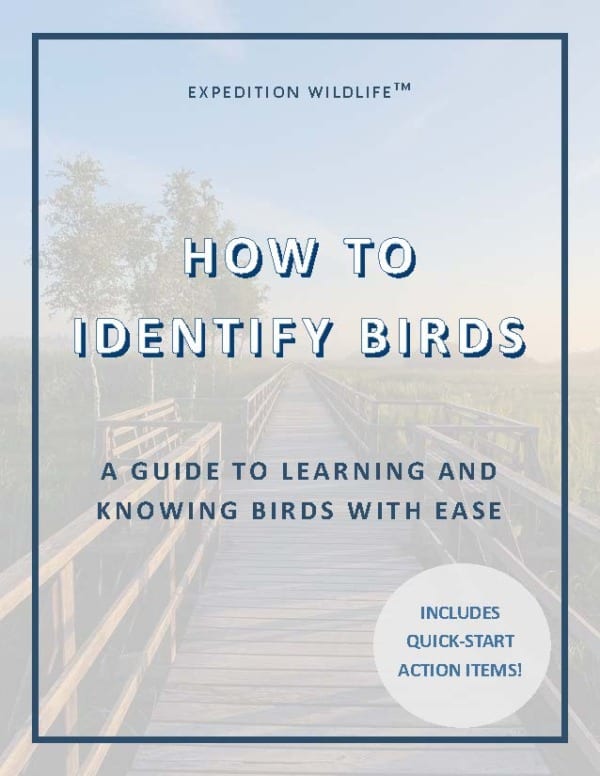
Birds and Mammals at Nisqually National Wildlife Refuge
Nisqually National Wildlife Refuge is an absolute gem and our favorite place to see wildlife in Washington State.
Named after the influential Nisqually Tribe leader and activist, Billy Frank Jr. Nisqually, Nisqually Wildlife Refuge is the perfect place to retreat into nature. You’ll spot some great birdlife and other wildlife, too.
Wooden walkways and gravel paths take visitors along the marshy waterways of the Nisqually Reach and into wooded oases.
What You’ll See at Nisqually
Birds can be seen here year-round. All manner of species, from Rufous Hummingbirds to Great-horned Owls, build their nests in the spring and summer. Waterbirds and shorebirds of all kinds can be seen in the winter. Bald Eagles search the muddy flats for fish at low tide, and the Olympic Mountains can be seen as you walk the 2-mile boardwalk along McAllister Creek.
Keep a keen eye out for river otters, minks, and harbor seals as you meander along the boardwalk as well.
Have a Chat with the Experts
The Visitor Center is open Wednesday through Sunday throughout the year, excluding major Federal holidays. Here, you can get more information on the nature and wildlife found at Nisqually.
Stop in for a chat with a Ranger about rare bird sightings. Don’t forget to download their bird checklist before you go!
Get Tasty Eats after Exploring Nisqually National Wildlife Refuge
After your visit, head over to Norma’s Burgers for a delicious burger and milkshake, or just a little further up the road to Curry Corner, for some of the best tikka masala and navratan korma!
Niqually makes the list for our top birding destinations in the USA. Check out the best places to birdwatch in the United States here.
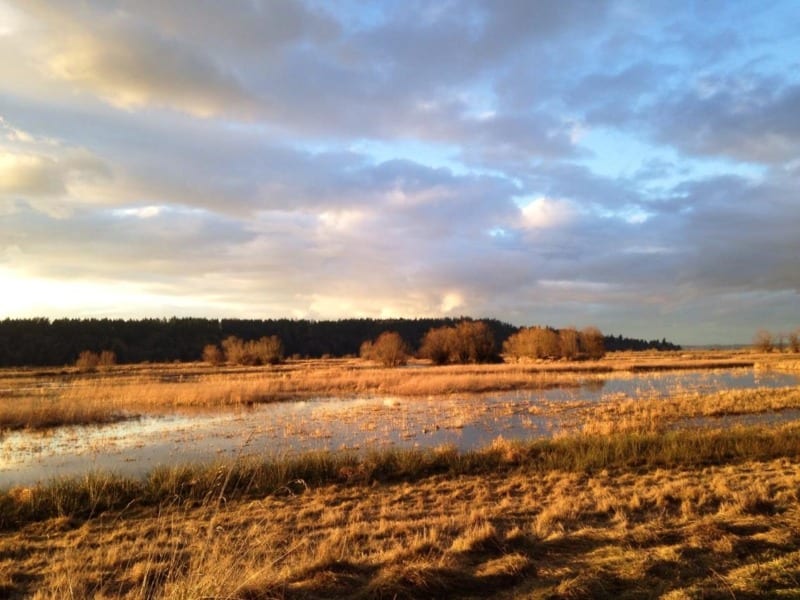
The beautiful waterways of Nisqually National Wildlife Refuge at sunset. Photo by Christa Rolls
Bald Eagles in the North Skagit and Seabeck
Bald Eagles and the Pacific Northwest go hand-in-hand. Eagles thrive here during nesting periods and even gather at various times of the year when fish are especially plentiful. The best places to see Eagles are:
- Rockport, just at the convergence of the Sauk and Skagit Rivers, and
- Seabeck, just off of Hood Canal.
Visit Rockport to see Bald Eagles
Throughout the winter, Bald Eagles will flock to Rockport, where salmon run in excessive quantities.
Boating tour trips run down the rivers, where you can see Eagle’s fight over fish. They’re so close to you, you’d hardly believe it! Link up with the Skagit River Eagle Tours for more information.
Visit Seabeck to see Bald Eagles
In late summer, when the tide hits extreme lows, Eagles flock to Seabeck to eat fish that flop about on the muddy banks. Not only is the countryside beautiful, but you’ll also see birds soar in front of an Olympic Mountain backdrop.
After spending a satisfying day bird watching, head over to Smokin’ Robinson’s Café for some delicious BBQ and potato salad. Attached to a gas station, it doesn’t look like much from the outside, but they make a mean BBQ pork sandwich from the smoker out back.
Fun fact: the 2015 Audubon Photography Awards grand prize photo was taken at Seabeck. If you are into bird photography it might be worth a visit!
Want to improve your wildlife photography? Read more about how to photograph wildlife better!
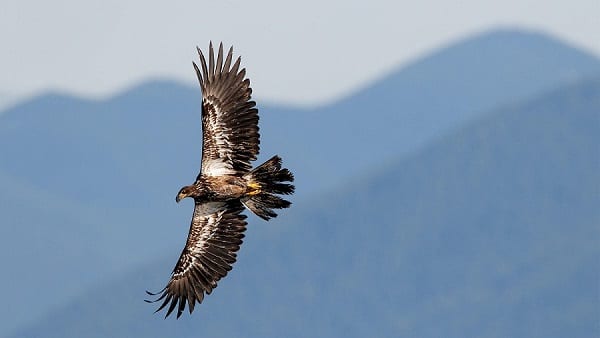
A juvenile Bald Eagle flies over Seabeck, Washington, with the Olympics in the background. Photo by Nathan Rolls
Snow Geese and other Birds in the Skagit Valley
In fall and winter, the farm fields and flats near the Skagit Wildlife Area and Skagit Flats host a spectacular sight.
Tens of thousands of Snow Geese forage on the farm’s heathlands throughout the day and in the evenings. Then, just before sunset, flocks of birds will head to their roosting grounds for the night.
This sight, backdropped by Mount Baker and the sunset, is once-in-a-lifetime! You’ll also spot numerous shorebirds, wading birds, waterfowl, owls, and more.
This occurrence happens every fall and winter as flocks of geese migrate south for winter. They move from the open arctic and tundra in northern British Columbia, Alaska, and Russia’s outlying islands southward.
Seeing all these birds in one place will certainly give you an appreciation for winter bird watching!
Take Part in the Skagit Valley Winter Bird Festival
The Skagit Valley hosts a winter bird festival every year. Here, you can get together with other birdwatchers to go in search of waterfowl, birds of prey, and others that call the Skagit home in wintertime.
Enjoy a Pint with your Birding Adventure
If you’re a beer lover, don’t miss the Skagit Farm to Pint tour. Washington is known for its breweries and special microbrews, and what better way to enjoy the beautiful scenery than to pair it with a craft brew tour? You can even get a passport stamped at each brewery location to receive a complimentary pint glass!
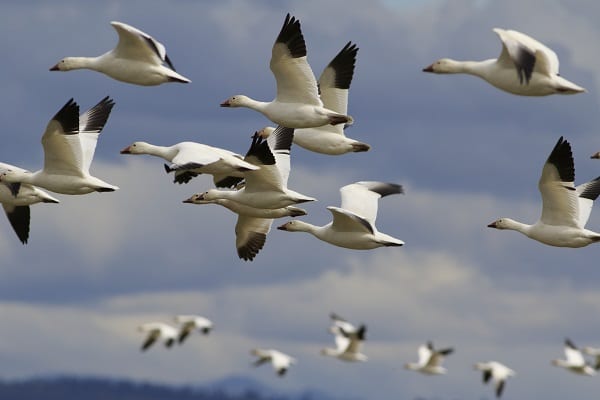
Snow Geese fly over the Skagit Valley in wintertime. Photo by Nathan Rolls
See how the Skagit Valley holds up to some of the top places to see wildlife in the world!
Washington Wildlife at Northwest Trek
Northwest Trek is a wildlife park near the border of Mount Rainier National Park. It is one of the best places to see and experience wildlife in Washington State.
There are numerous activities to enjoy at Northwest Trek, including:
- walking trails through the woods, where you can bird watch and spot other small mammals roaming about
- a walking tour, where you can see animals in large enclosures similar to a zoo, and
- a tram tour, where you ride a tram through open grazing spaces and woods to see free-roaming wildlife.
There are always various activities going on at the park, and everything is very kid and family-friendly for those looking for a fun and safe way to explore Washington’s wildlife.
Embark on a Photo Tram Tour
One of our favorite things about Northwest Trek is their tram photo tour. The tour stops at various wildlife gathering areas to allow photographers time to get their perfect shot. Spaces are limited, so be sure to book early!
Talk to the Experts about their Conservation Initiatives
Northwest Trek is also party to many conservation projects and initiatives, including reintroducing wild fishers back to Washington’s forests and bringing grizzly bears back to the Cascade Mountains.
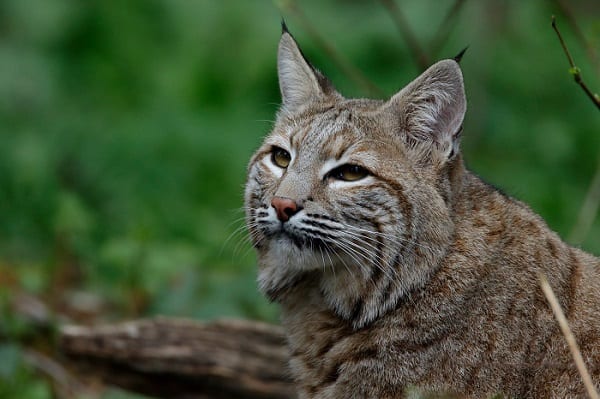
A bobcat relaxes in the brush at Northwest Trek. Photo by Nathan Rolls
Mountain Goats in the Cascade and the Olympic Mountains
Mountain goats are native to the Cascade Range and were introduced to the Olympics for sport game hunting in the early 1900s. Permits for hunting them are very rare, however.
Their numbers throughout the state have declined from around 10,000 animals to only a couple thousand (Source: Washington Department of Fish and Wildlife, WDFW).
Living high in the mountains, especially in the rockiest and most exposed areas, it can sometimes be challenging to see them. Though it’s often hard to spot them, when you do, it truly adds something special to your alpine experience.
These animals are very charismatic. Especially in winter when they have a thick, white coat that makes them look majestic.
They have a voracious appetite for slow-growing, high alpine vegetation, and are, thus, considered a nuisance by some.
The Best Places to See Mountain Goats in Washington State
The top places we’ve seen mountain goats are on Mount Ellinor, Lake Ingalls, the Alpine Lakes Wilderness, and throughout the Olympics and Cascades.
You can also take guided hikes or snowshoes of the Olympics.
Safety around Mountain Goats
Keep in mind that mountain goats are still wild animals. They aren’t related to domestic goats, and they should be treated as such.
DO NOT attempt to touch, feed, chase, or otherwise aggravate the goats, especially when they have young.
WDFW officials ask hikers to not urinate within 50 meters of a trail and to instead go on rocks rather than vegetation. Goats love to lick the salt that forms from dried urine and can easily destroy patches of alpine vegetation in their attempt to eat it up.
There have been instances where people were maimed or killed by mountain goats, so these suggestions should be taken seriously.
Overall, if you are hiking in a place where you expect to see them, just avoid them and keep calm. They tend to want to leave people alone more than anything.
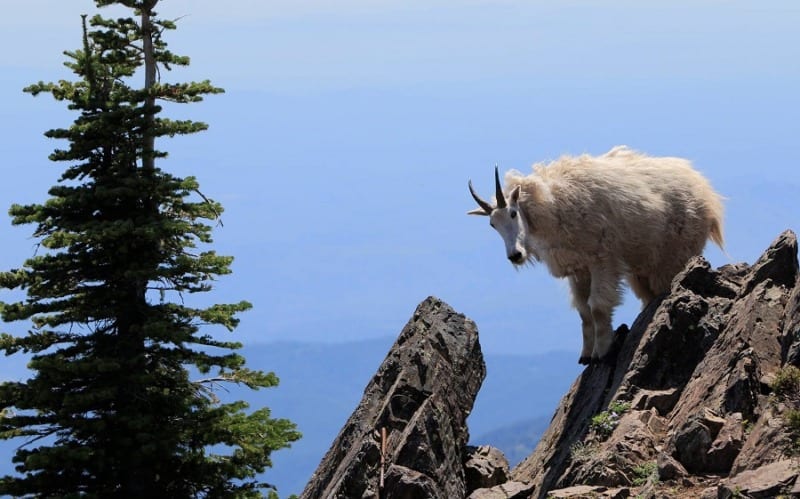
A mountain goat steps over a rocky gap at Mount Ellinor, Olympic National Park. Photo by Nathan Rolls
Whales, Orcas, and Porpoises off the Olympic Coast, the San Juan Islands, and the Puget Sound
Western Washington sits along a main migration corridor for whales.
Whales head north in springtime to breeding grounds in the North Pacific Ocean, and south in autumn to warmer South Pacific waters.
The most common whale seen off the coast is the Gray whale, which feeds in the shallow areas closer to shore. It’s also possible to spot Humpbacks, though they are rarer, and Minke whales.
Best Places for Seeing Whales, Orcas, and Porpoises in Washington State
Kalaloch Beach and La Push are two of our favorite places to watch whales spouting from the shores!
The Puget Sound is amazing for spotting Orcas and porpoises, such as Harbor and Dall’s porpoises.
The Orcas in particular are those from the Southern Resident Killer Whale family. This group has three distinct pods that frequent Washington’s waterways and can be most readily seen around the San Juan Islands.
The Whale Trail, a route of top spots to see whales and porpoises from British Columbia all the way down to northern California, is a great place to start for spotting whales on your own.
Check the timelines to see the best times of year to spot various animals. The migrations are seasonal and routes or residencies differ with each species.
Outfitters We Recommend for Whale Watching
Plan a trip with San Juan Safaris and consider staying on the islands for a day or two. There’s so much to explore, and the ferry journey to the San Juan Islands National Monument is nearly as much fun as the activities you can have once you arrive!
We’ve also had great experiences with Island Adventures whale watching company – just be sure to pack some Dramamine if you’re prone to sea sickness!
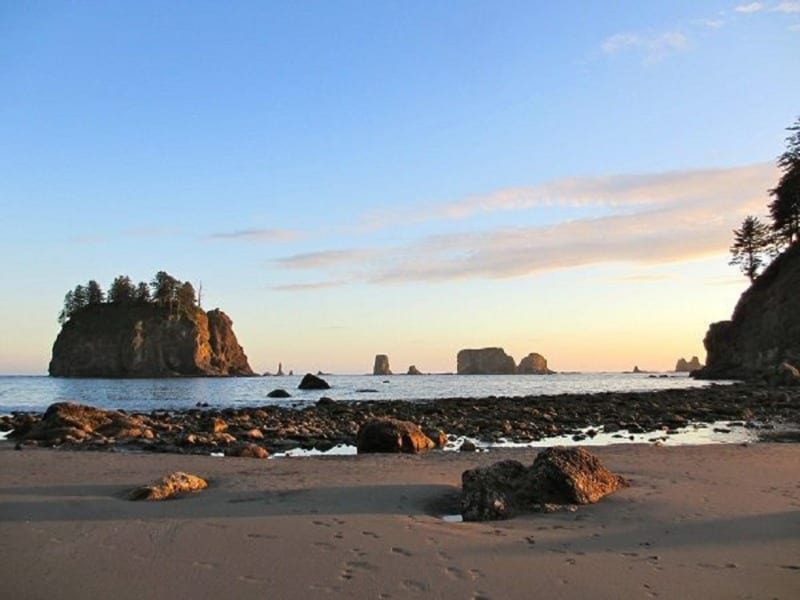
Sunset over the sea stacks at La Push, Washington. Photo by Christa Rolls
Wolves at Wolf Haven International
Over the last few decades, wolves have slowly started coming back to repopulate Washington State.
The Washington Department of Fish and Wildlife (WDFW) estimates that there are 22 wolf packs in Washington, primarily in the northeastern part of the State. However, some live in the North Cascades in western Washington, too.
Though the likelihood of seeing a wild wolf is very rare, especially in western Washington, you can see wolves and contribute to wolf conservation at Wolf Haven International.
Wolf Haven’s Mission and Efforts
Wolf Haven is a sanctuary for captive-born and displaced wolves and wolf-dogs. The wolves seen on-site are not ones purposefully captured from the wild or bred internally – they are rescues.
The wolf-dogs, in particular, are rescues from homes that didn’t fully understand the responsibility of owning a wolf-hybrid.
Wolf Haven does a magnificent job of educating the public about wolves and advocating for wolf conservation throughout the State.
Their role in Washington’s Wolf Advisory Group allows them the ability to contribute to the State’s wolf management plan. This is crucial work, considering the extensive effort and associated human-wildlife conflict that goes into managing wolves in the wild.
Wolf Haven is also actively involved in the Species Survival Plan for Mexican Gray Wolves and Red Wolves. Red wolves, by the way, are the world’s most endangered canine species.
The property on which Wolf Haven is located is also beautiful, as it sits in the middle of Mima Mound prairie. Mima Mounds is a unique, glacial till prairie that formed from once-moving glaciers.
Wolf Haven only accepts visits based on reservation, so contact them ahead of time to set up your visit!
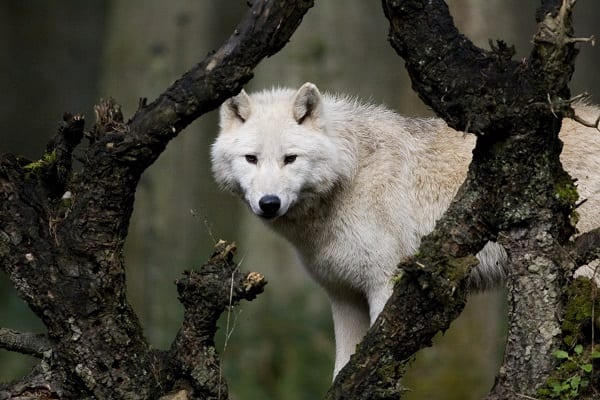
Wolf peering through branches at Northwest Trek. Photo by Nathan Rolls
Learn about Natural History at the Burke Museum
The Burke Museum of Natural History and Culture has extensive specimen collection programs for various wildlife, including birds, amphibians, mammals, insects, and much more. They do this to keep a detailed inventory on animal genetics, populations, and habitat information.
The specimens might not be alive, but the work performed at the Burke is incredibly important for scientific research. It’s worth a visit if you’re interested in the research side of wildlife biology!
Visiting the collections is done by appointment only, so contact the collections manager ahead of time if you’re interested!
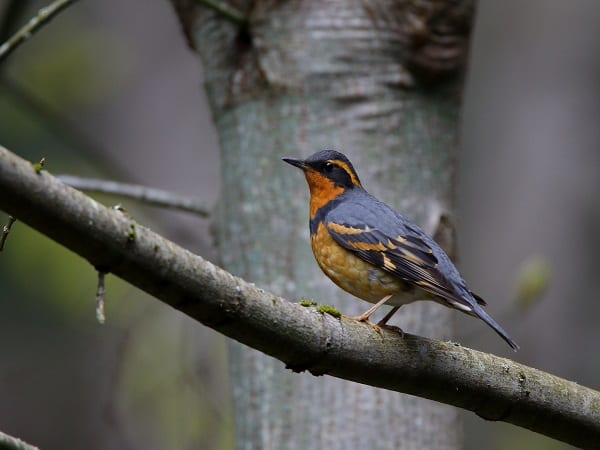
Varied Thrush can be seen in forests throughout western Washington. Photo by Nathan Rolls
Have you visited any of our favorite places to see wildlife in Washington State? Let us know, and share your experiences with us in the comments!
Happy Travels!
Christa and Nathan
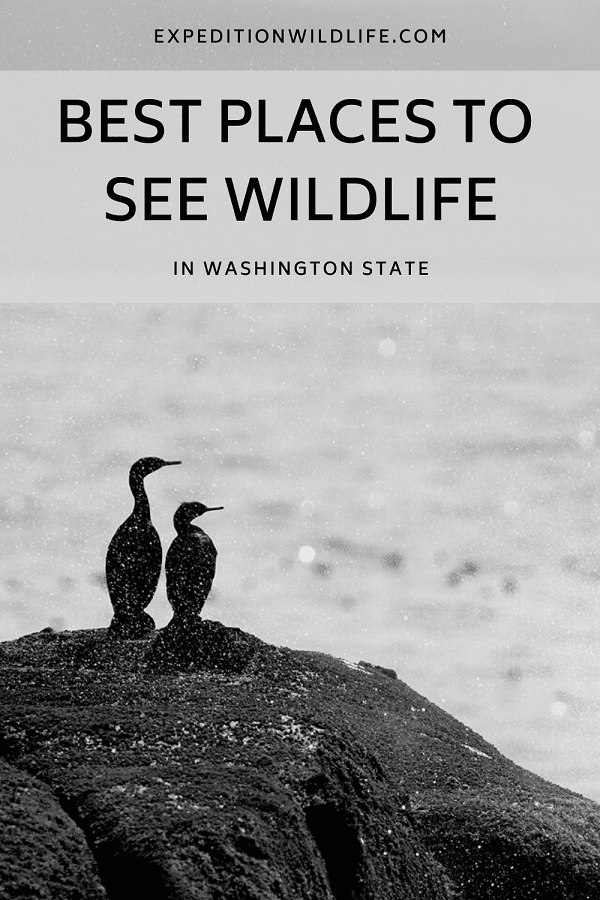

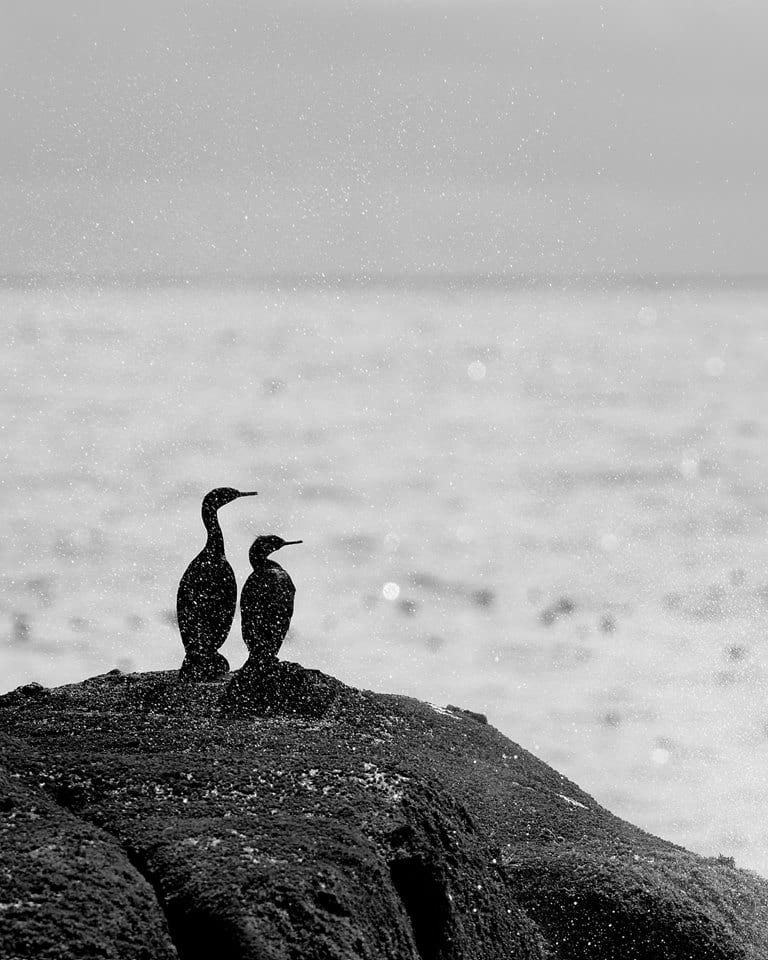
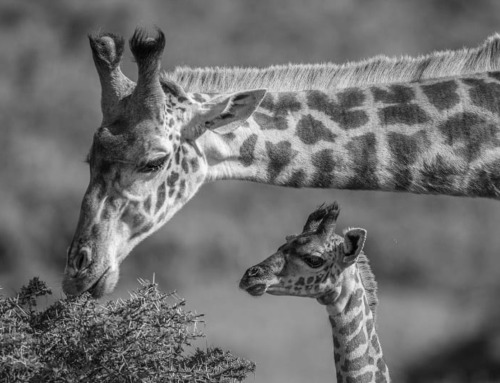
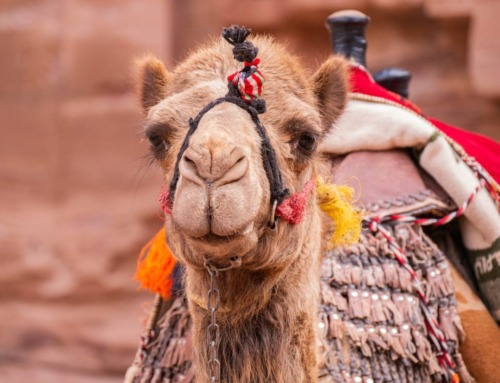
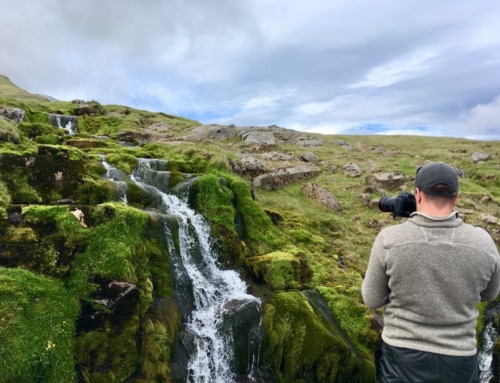
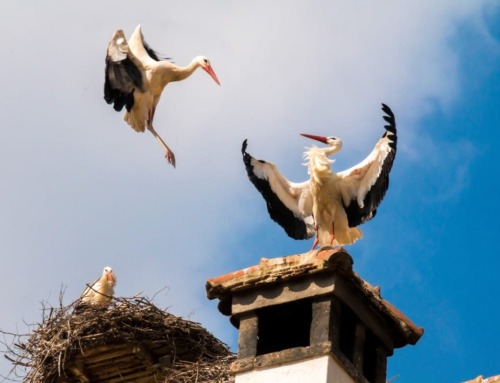
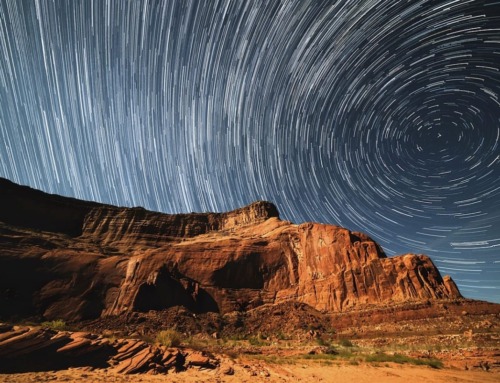
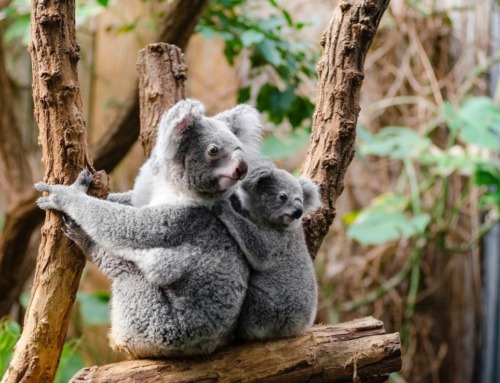
Leave A Comment